Matthew Buscemi's Blog, page 23
May 12, 2019
Ecological SF
In preparation for 2020’s International Conference for the Fantastic in the Arts, I’ve been bringing myself up to speed on ecologically-themed SF.
My working analysis is that “ecological SF” emerges as a distinct branch of apocalyptic and post-apocalyptic SF in the mid-twentieth century around the time of the invention of the atomic bomb, precisely because such weaponry makes it possible to cognize the world ending not due to random accidents of biology or meteorological phenomena, but due to human behavior.
While, initially, the worry over atomic bombs seems confined to the nuclear holocaust’s impact on human societies, as in Leigh Brackett’s The Long Tomorrow (the natural world, eighty years on from the devastation, remains unscathed), a decade later J. G. Ballard would write about an Earth blighted by the unintended side-effects of human behavior in The Drought.
In reviewing the existing literature on the topic of ecological SF, I’ve noticed a tendency to lump together SF of overtly ecological thematics with works only marginally or tangentially ecological. Frank Herbert’s Dune, for example, provides an extremely detailed alternate ecology, but the book is not about that ecology. Rather, the novel’s primary thematics have to do political power and its application. The involvement of natural resources is tangential. Another excellent example is Ursula K. Le Guin’s The Dispossessed. The setting’s ecological details only serve to drive the novel’s primary concern, which is, again, political.
What follows is my list of ecological SF novels (and one novella by Ted Chiang) ordered chronologically. I include both proto-ecological texts (human existence is imperiled, but the effects on the rest of the natural world are nil or minimal), and overtly ecological (the entire natural world is imperiled; and/or, human behavior has metastasized into something grotesque). I have attempted to exclude texts like Dune and The Dispossessed, which, while excellent, do not provide primarily ecological thematics. Since these are my initial explorations, it is worth noting that I have not read all of the books on this list. As such, I cannot vouch that all of them meet one of those two standards, merely that they appear to do so from blurbs and descriptions.
(1955) The Long Tomorrow, Leigh Brackett
(1956) The Death of Grass, John Christopher
(1957) On the Beach, Neville Schute
(1958) Non-Stop, Brian Aldiss
(1959) A Canticle for Leibowitz, Walter M. Miller
(1959) Alas, Babylon, Pat Frank
(1962) Hothouse, Brian Aldiss
(1962) The Wind from Nowhere, J. G. Ballard
(1962) The Drowned World, J. G. Ballard
(1964) The Drought, J. G. Ballard
(1965) The Genocides, Thomas Disch
(1965) Davy, Edgar Pangborn
(1966) The Crystal World, J.G. Ballard
(1966) Make Room! Make Room!, Harry Harrison
(1971) The World Inside, Robert Silverberg
(1972) The Word for World is Forest, Ursula K. Le Guin
(1972) The Sheep Look Up, John Brunner
(1972) The Gods Themselves, Isaac Asimov
(1972) 334, Thomas Disch
(1972) The End of the Dream, Philip Wylie
(1973) The Bridge, Keith D. Mano
(1975) Ecotopia, Ernest Callenbach
(1976) Woman on the Edge of Time, Marge Piercy
(1976) Where Late the Sweet Birds Sang, Kate Wilhelm
(1981) Hello America, J. G. Ballard
(1987) The Sea and Summer, George Turner
(1989) Grass, Sherri Tepper
(1989) The Child Garden, Geoff Ryman
(1990) Earth, David Brin
(1991) The Ragged World, Judith Moffett
(1992) Ishmael, Daniel Quinn
(1992) Red Mars, Kim Stanley Robinson
(1993) Green Mars, Kim Stanley Robinson
(1994) Mother of Storms, John Barnes
(1994) Parable of the Sower, Octavia Butler
(1996) Blue Mars, Kim Stanley Robinson
(1998) Into the Forest, Jean Hegland
(1999) White Mars, or, the Mind Set Free, Brian Aldiss
(2000) A Friend of the Earth, T. Coraghessan Boyle
(2003) Oryx and Crake, Margaret Atwood
(2003) The City of Ember, Jeanne DuPrau
(2006) The Children’s Hospital, Chris Adrian
(2007) The Stone Gods, Jeanette Winterson
(2008) Exhalation, Ted Chiang
(2008) World Made by Hand, James Howard Kunstler
(2009) The Windup Girl, Paolo Bacigalupi
(2009) The Year of the Flood, Margaret Atwood
(2012) 2312, Kim Stanley Robinson
(2012) Memory of Water, Emmi Itäranta
(2013) MaddAddam, Margaret Atwood
(2013) Shaman, Kim Stanley Robinson
(2014) Annihilation, Jeff Vandermeer
(2014) Authority, Jeff Vandermeer
(2014) Acceptance, Jeff Vandermeer
(2015) The Water Knife, Paolo Bacigalupi
(2015) Aurora, Kim Stanley Robinson
(2015) Green Earth, Kim Stanley Robinson
This novel is a reworking of his earlier “Science in the Capital” trilogy.
(2017) New York 2140, Kim Stanley Robinson
(2017) Borne, Jeff Vandermeer
March 23, 2019
New Publication: The Shipwright and Other Stories

Available on Amazon in paperback and eBook on August 5, 2019
Back in 2016, during the last writing group I attended in Seattle (one of the good ones), I arrived at group one morning, and instead of writing, I found myself drawing a map. I had just finished binging on Ursula K. Le Guin’s Earthsea novels, as it happened, so it should be unsurprising that an archipelago emerged.
When I’d finished, I got to wondering what that world was like. A couple of things happened simultaneously. First, I wanted to draw on my budding interest in the Classical Greek world, so I decided upon an iron age civilization composed of heterogenous but culturally similar city-states. Second, I had come to realize, after publishing Schrödinger’s City, that I had been unconsciously trying to diminish the number of fantastic elements in my stories while maximizing the narrative efficacy of those I chose to include. I decided to push this principle even further in my new world. The world of Palípoli has three moons. That’s it. No magic. No monsters. No aliens. Three moons.
But from that one change, I was able to create vast societal, religious, and cultural differences from real world iron age civilizations.
Although I may not have released any new short stories or novels since the electronic publication of Our Algorithm Who Art Perfection in 2016, giving the appearance of stagnation, I’ve in fact been quite busy, writing Palípoli stories sporadically throughout the last three years.
The collection includes six short stories:
“The Shipwright”
“Persistence, Vision, Focus”
“Simple Reason”
“The Measure”
“Rite of Courage”
“Something Novel”
The Shipwright and Other Stories will be available in eBook and paperback on August 5 of this year.
March 3, 2019
A Story for a Story
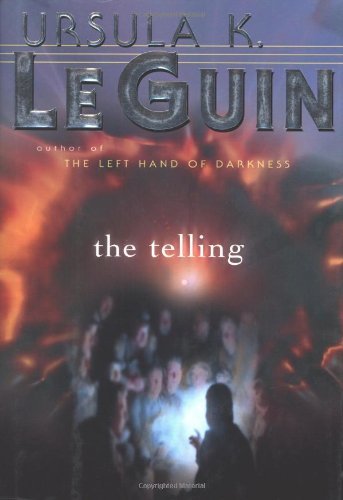
The Telling is a masterfully rendered novel that has not received nearly as much critical attention as it deserves. Read my full review at SFBook.com.
February 25, 2019
The Future is Now
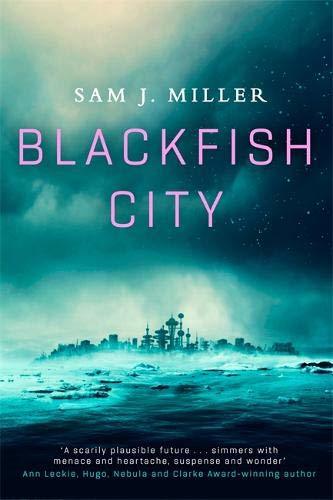
I really wanted to like Blackfish City, and I have to admit that the major themes of the use of power and the importance of empathy are well realized, but there were significant issues that spoiled my potential enjoyment. Read my full review at SFBook.com.
February 15, 2019
All Your Truth Are Belong to Us
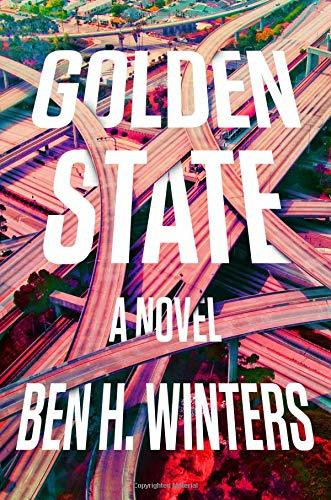
Golden State tackles enormously complex issues and distills them into prose that is engaging and easy to find oneself falling into. Read my full review at SFBook.com.
February 11, 2019
Small World
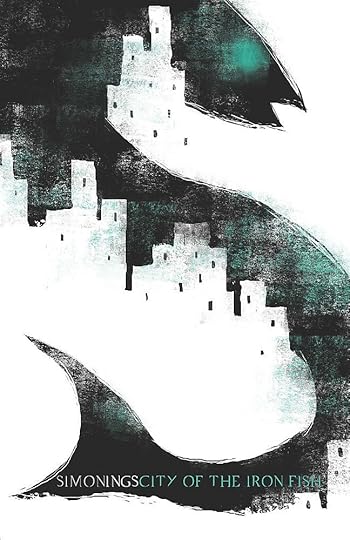
City of the Iron Fish was a fascinating read. I loved how the author oscillated back and forth between realism and wildly fantastic. But the novel was not without its drawbacks.
My review was picked up by SFBook.com, and you can find the full text here.
February 9, 2019
Intriguing SF New Releases (Feb-Apr, 2019)
In the past I have shied away from Reddit under the blithe assumption that there was nothing there worth paying attention to. A few months back, during my research into various lifting routines, I discovered a blogger who recommended the routines listed on the Fitness subreddit’s wiki. Intrigued, I did my own exploration and found their list to be, in fact, quite good. Thus began my slow and careful perusal of what else Reddit has to offer. What I’ve discovered is that one does have to do a lot of filtering on Reddit, but one will hit gold every so often, and those hits are valuable enough to make the endeavor worthwhile overall.
Further investigation yielded the PrintSF subreddit, and one nugget of gold it yielded was Locus Magazine, an SF industry journal, which maintains something I’ve always wanted access to: a full list of all the SF that’s coming out in the near future spanning all major and minor publishers. Finally, I have a single and complete list that I can search for intriguing new reads.
Based on my perusal of this new source, here’s what I’m planning to read over the next three months.
February
The City in the Middle of the Night by Charlie Jane Anders
I initially raised my eyebrow at this one, as the blurb for Anders’s previous novel, All the Birds in the Sky, didn’t particularly catch my attention when it came out a few years back. I read through this book’s blurb and it feels like it’s worth a shot. I feel as though the idea of the tidally-locked planet has been done before, but it seems like there’s a good chance of the characters and their society being interesting.
March
Gingerbread by Helen Oyeyemi
The blurb makes this novel sound like one of those “casually weird” experiences. The fantastic characters are trying to fit into their realistic setting. I generally like that kind of stuff, especially with themes of friendship and family woven in, as the blurb suggests. This is the kind of SF I would have only caught before if I’d happened upon it in my local bookstore.

The Bird King by G. Willow Wilson
At one point, I had a copy of Alif the Unseen checked out from the library, but I never got around to it. Reading the description of The Bird King only makes me want to go revisit that novel all the more. The subject matter is even more compelling after my foray into the Classics, as one of my side jaunts from that was into the history of the Byzantine Empire and medieval Europe.

Sooner or Later Everything Falls into the Sea by Sarah Pinsker
I find I’m not often drawn to short story collections, but the description of this one sounded delightful. I’m a big fan of works that weave disparate themes and motifs together into something cohesive, such as Cloud Atlas, and that’s exactly what this sounds like.
April
Perihelion Summer by Greg Egan
Okay, I admit it. I’m a sucker for disaster stories. Name a corny, disaster-themed B-movie and I’ve probably seen it. Reading the blurb for this book, my hope is that it transcends typical B-movie fare and does something really interesting with the characters and their plight. I also love the idea of a “rogue black hole.” That’s definitely a new one.

Inspection by Josh Malerman
I admit, there is a definite “YA love story” vibe coming from the blurb, but I chose to proceed with this one on the basis of the mystery around the world it sets up. This has the potential to go really, really wrong, but I’m hoping that it doesn’t. The blurb does plant the seeds of enough interesting ideas that I’m willing to give it a shot.
Other Discoveries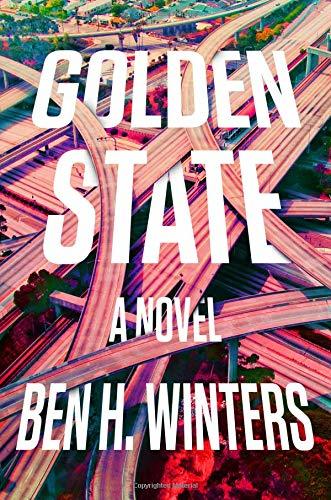
Golden State by Ben H. Winters
This is my current read. It was released this January, and I started it a few days ago. So far, so good. You’ll see a review of this book from me sometime in the near future.
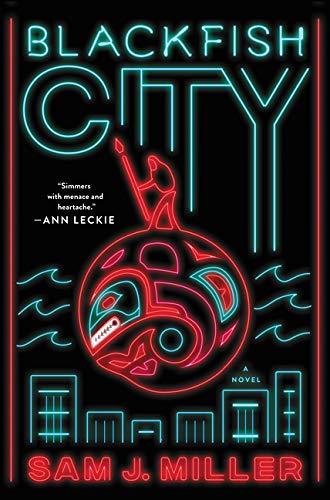
Blackfish City by Sam J. Miller
I discovered this from one of newest Locus edition’s “Best of 2018” sections. I liked what the reviewer there had to say, and upon reading the novel’s blurb, I found myself laughing out loud, in a good way. I can’t wait to see how Miller depicts the “orcamancer.” Definitely looking forward to this one.

Semiosis by Sue Burke
A novel about humans and aliens struggling to successfully recognize one another’s sentience? Sign me up. This one I didn’t actually get from Locus; it’s the book of the month over at the PrintSF subreddit.
I’ve maintained for some time now that nothing interesting is happening in mainstream SF these days. This interpretation has been largely based on my experience with Seattle SF writing groups and those individuals’ generally limited reading interests. Based on my brief exposure to the full range of published books, my view of the field appears to have been too narrow. Clearly, I have a lot of reading and learning to do.
February 4, 2019
Winter Musings
Seattle has been caught in winter’s icy grasp. Yesterday afternoon, it began snowing. Last night, the temperature dropped below freezing, and it has stayed there. When I woke up to go to the gym, it was still snowing. I walked the two blocks through bursts of wind, snowflakes whipping all about me. When I’d finished my workout, the snow and wind were still going, strong as ever; my footprints from the trek to the gym had been erased in billowing drifts.
My city does not handle snow and ice (especially ice) well. My husband and I live at the top of a very large and steep hill. Snow is rare. So is the temperature dropping below the freezing point. The two combine so infrequently, that it makes no economic sense for the city to deck itself out with snowplows and the like. A confluence of events such as this effectively shuts Seattle down.
I sit at home, reading, writing, reflecting, pondering. I’ve found myself ruminating on the SF I’ve read that has cold and winter as central themes.
The Left Hand of Darkness by Ursula K. Le Guin takes place on the planet Gethen, one which, at the time of the novel, is in the midst of an ice age. Only the areas around the equator are habitable, and even there, it can become quite cold. In other regions, winter weather can be extreme.
In The Last Man by Mary Shelley, a plague spreads across all of Europe, and presumably the rest of the world. The novel spans many decades, and winter each years is a respite, as the plague goes dormant during those months. These are times of sober reflection and morning, since each summer the disease returns anew, and the work of tending to the ill consumes all human energy.
C. S. Lewis’s Out of the Silent Planet is an adventure across the surface of Mars. An unwilling astronaut searches for a way to get back to Earth. Lewis populated Mars with fantastical creatures and a surreal, tundra-esque biome. In the next book in the series, he would go on to create a verdant, tropical biosphere for Venus.
Snow and winter are an intimate part of The Bear and the Nightingale by Katherine Arden. Set in a fourteenth century Russia where the gods of old Russian folklore are real, the story details the events of a young woman named Vasilisa whose village struggles to survive the winters when the power of the natural gods begins to wane. Vasilisa’s struggle to save her village from the cold forms a direct parallel to the Russian folktale of Father Frost.
It strikes me that there is not a lot of speculative fiction that utilizes cold and winter as major thematic elements. But then, perhaps that is just a limitation of my particular library. If you can think of a science fiction or fantasy book that I missed, drop it in the comments.
February 3, 2019
The Beautiful Puzzle
I dig Gene Wolfe, Borges, Umberto Eco, Italo Calvino, recently been enjoying some VanderMeer and Mieville. Any recommendations for where to go next for this "beautiful puzzle" kind of thing? Something that has mystery and maybe a slight labyrinthine quality, but is beautifully composed and doesn't necessarily require you to try to figure the puzzle out (maybe you can if you want to, like people try to do with Wolfe).
- /u/Nahs1l
(source; emphasis mine)
I recognized both my literary tastes and the direction in which my own writing has developed in this post on the Print SF Reddit. The books listed in the reply to that post reinforced the sense of having discovered “my” sub-genre.
The Definition of the Beautiful PuzzleThis brand of strange is apparently a selective taste. I have noticed that the majority of readers prefer to not have to work too hard to understand how the world of a novel works. A Beautiful Puzzle novel contradicts this desire in two ways, which the Reddit poster aptly identified—the “labyrinthine quality” and “beautiful composition.”
When reading a Beautiful Puzzle, the reader is, at every juncture, expected to incorporate new details into their overall mental picture of the world of the novel. At no point can the reader lazily assume that the novel of the world will operate as ours does (hence the metaphor of the puzzle). When the average reader encounters an element of a novel that does not easily mesh with their conception of “how things are,” they presume it to be an error—an authorial slip-up. A Beautiful Puzzle reader instead assumes that they’ve been presented with a new puzzle piece and must then work to find a way to fit it into their mental picture of the novel’s world.
The other quality is beautiful composition. For evidence of the fact that many readers are averse to beautiful composition, I cite this strip of the Penny Arcade comic and its associated commentary by the author. I think the author didn’t realize, at least when he wrote that comic and its commentary, that his analysis of Miéville’s writing style is a stronger critique of himself than of his target. Beautiful composition makes a work more difficult to parse and analyze. Beautiful Puzzle readers enjoy this challenge.
Interesting also is the fact that, while the field of the Beautiful Puzzle novel has a strong affinity with SF, a Beautiful Puzzle need not be SF. Umberto Eco novels largely achieve their Beautiful Puzzle status through temporal dislocation, and Borges by disrupting the ontological status of everything present in his real, contemporary world. SF’s alterity opens up many possibilities for Beautiful Puzzle writers, but SF is not a requirement to achieve the effect of a Beautiful Puzzle.
Beautiful Puzzle SF writers (via Reddit)Nina Allan
J. G. Ballard
Ian M. Banks
Brian Catling
Liu Cixin
David Cronenberg
John Crowley
Giorgio De Maria
Samuel Delaney
William Gibson
Nick Harkaway
M. John Harrison
Stanislaw Lem
China Miéville
Haruki Murakami
Reza Negarestani
Ada Palmer
Christopher Priest
Hannu Rajaniemi
Alastair Reynolds
Herbert Rosendorfer
Paul Russo
Neal Stephenson
Arkady and Boris Strugatsky
Michael Swanwick
Catherynne M. Valente
Jeff VanderMeer
* In bold are authors, whom I can attest have written works that fit the sub-genre. In italic are authors of whom I am skeptical of their status (because I have read their works, and I would consider them borderline).
some AdditionsI recently happened upon a novel called City of the Iron Fish by Simon Ings. Not only is it superb, but, based on having read just over half of it, it is most certainly a Beautiful Puzzle. The novel has had me captivated since I started it. I am shocked that both the novel and its author seem to have been overlooked by the SF community at large.
I would argue that David Mitchell also belongs on that list, by way of Cloud Atlas and The Bone Clocks.
Final NoteI feel it is important to note that, while fitting into the sub-genre of Beautiful Puzzle makes a novel both complex and heavily stylized as I have argued above, these characteristics cannot be equated with a novel being good. In fact, there are books by those very authors listed above, which I would argue are bad Beautiful Puzzles. Complexity, poorly utilized, can lead to obscurantism and the death of all meaning. Stylistic flair, poorly utilized, can become an impediment to plot and theme rather than harmonize with them. The danger of writing a Beautiful Puzzle, it seems, is that the puzzle’s pieces won’t ultimately fit together. In a genre characterized by complexity, achieving that harmony can be a difficult thing.
January 24, 2019
Designing the New Editions
Three days ago, I announced my re-released novels and short fiction. In this post, I’m going to write a bit about some of the stylistic decisions I made in the books’ layout and design.
Covers

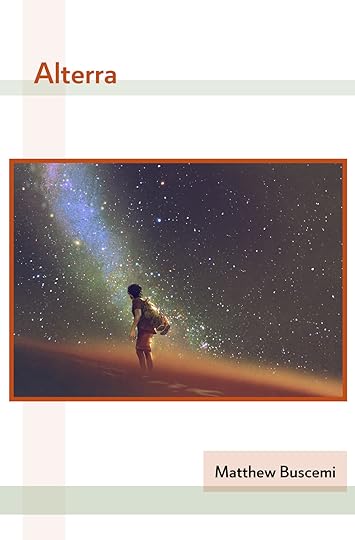
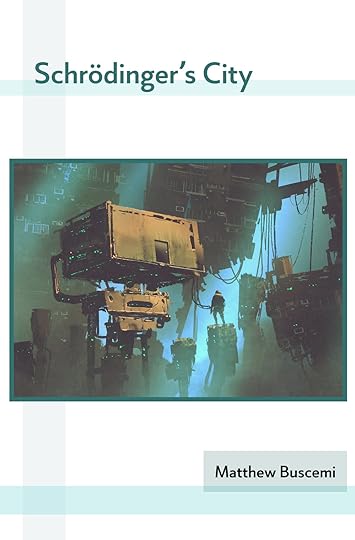
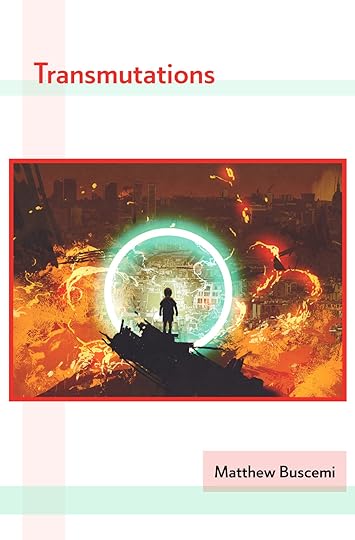
I love taking a single design and applying different color patterns to it. I initially started with a single-color design, as I’ve done many times before, but then I hit on the idea of doing a two-color design, which I should have remembered was really effective for Beyond the Hedge Volume 1. The new cover series turned out very much to my liking.
Title Pages




A few years ago, I did all the reading I could on book typographic design. As with any field, different typographers all said different things, but the one thing they all agreed on was “keep it simple.” Interior page designs are extraordinarily sensitive to small changes. To achieve a professional look, I opted for that simplicity.
The title pages of the new series are minimally adorned. For the font face, I used Roos throughout the entire book. You can see Roos Roman Small Caps here on the title pages, and I used it throughout the book for various section headers. As you’ll soon see, the standard Roman is readable, too.
Tables of Contents




The tables of contents presented another challenge. Voyage Embarkation, Insomnium, and Alterra were straightforward with their flat chapter structures, but what to do with Schrödinger’s City, which contains chapter groupings into cycles, and Transmutations, whose stories are organized thematically? I had to create a design that would accommodate both structures and hopefully be flexible enough to adapt to anything I might invent in the future.
In the case of the table of contents, especially, it really helps that my husband keeps a lot of academic books around the house. Academic books generally have elegant and practically designed tables of contents, whereas much fiction, regrettably, foregoes the table of contents completely. I find this to be one of the great benefits of being an independent publisher. I am unburdened by a marketing department demanding that I reduce page count to the absolute minimum however I can.
Chapter Headers





Chapter headers presented even more issues. Similarly to the tables of contents, some of the books have bare chapter titles (Insomnium, Alterra, and Transmutations), while others had sub-headers (Voyage Embarkation and Schrödinger’s City). Accommodating this was pretty straightforward. I was largely able to copy what I had done in prior editions, while ensuring consistent font face and alignment across the new editions.
However, Transmutations presented a new problem: it contains headers of major sections with my authorial reflections and also headers of individual stories. The design needed to distinguish these. I decided to use the small caps version of Roos to delineate the two, and I liked how that worked out. Above you can see the section header for “Thinking Machines” with my notes (small caps title) and a story in that section, “Adaptive” with a standard title.
The Text Block




A single good text block design should generally work across a large number of books. Some of the more interesting challenges actually happened within individual texts, especially the short stories in Transmutations, where the texts are more experimental. “The Blazrath,” for example, consists entirely of a series of text messages transmitted back and forth between two characters, while “Lunar Eclipse” is a series of invented documents, including everything from treatises, to research abstracts, to a television show dialogue transcription.
But those issues don’t affect the block or the page headers themselves, it’s merely a challenge to make the text elements look good within the block.
No, the point of interest here is my use of the Van de Graaf canon for page construction. In the 1940’s, the book designer J. A. Van de Graaf noticed that a number of medieval books contained similar proportions for their text blocks, even though paper sizes differed wildly. He wondered how the typographers of the day ensured such consistent proportions without access to any of the fancy tools we have today.
Eventually, Van de Graaf discovered a method that allowed him to calculate the shape of the medieval text block for any given page size using only a ruler (which, combined with a pencil, would be the only instruments a medieval typographer had access to).
The canon is considered the height of elegance. It contains a number of interesting mathematical properties, such as that the height of the text block is the same length as the width of the book page (you can read about other interesting properties at the link above). However, the canon is largely eschewed these days, as it is economically impractical for most publishers. Look at all that “wasted” margin space!
This is another distinct advantage of being an independent publisher. I can make the choice to utilize the canon, prioritizing elegance for print readers rather than economy. I expect readers who desire economy to choose the ebook, anyway. I want my print readers to have as elegant an experience as possible, not to mention ample room for their thumbs at the page edges.
It’s worth noting that the above examples from my new editions do not follow the Van de Graaf canon perfectly. When printing any book with a glue binding (such as all print-on-demand paperbacks are bound), the Van de Graaf canon must be altered to accommodate the roll of the page toward the binding. In medieval times, the only way to bind a book was to sew the pages in (and many hardcover books are still bound this way today). In such books, the pages open perfectly flat and the entire sheet can be seen. As a result, the text block can be as near to the binding as you wish, and it won’t disappear into a roll.
In the above design, the text block is the same proportions as the Van de Graaf canon text block, but it has been moved away from the spine to accommodate the roll. Typographers tend to agree that, ultimately, it does not matter what your pages look like unbound or on a computer screen. What matters is how they look in the final product.



